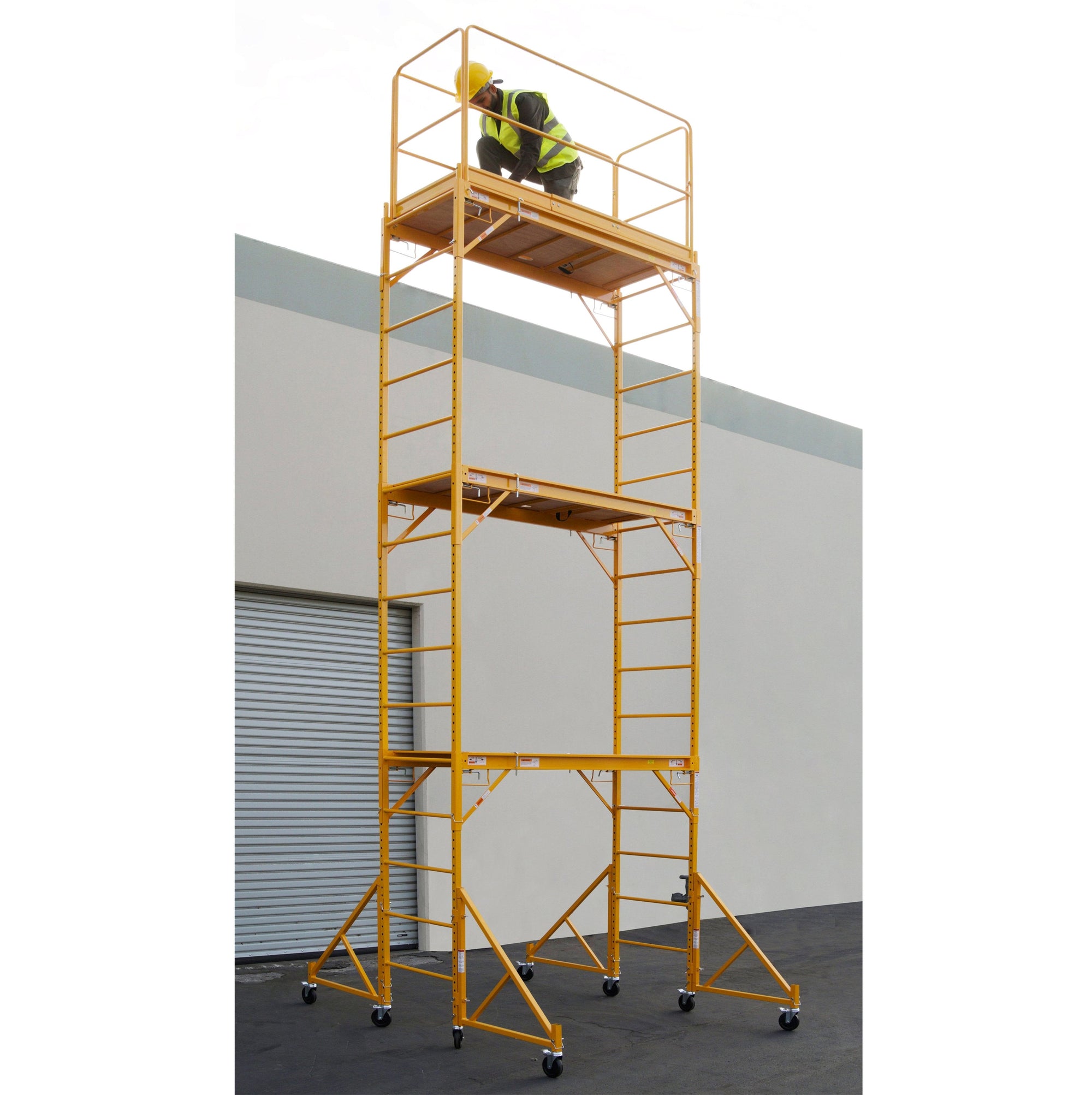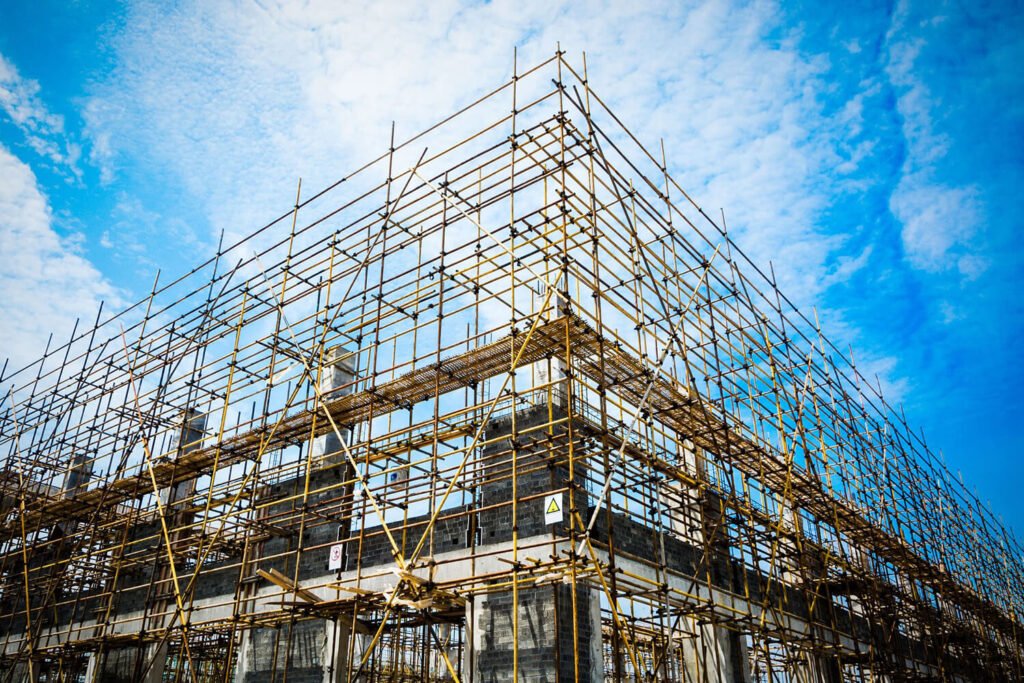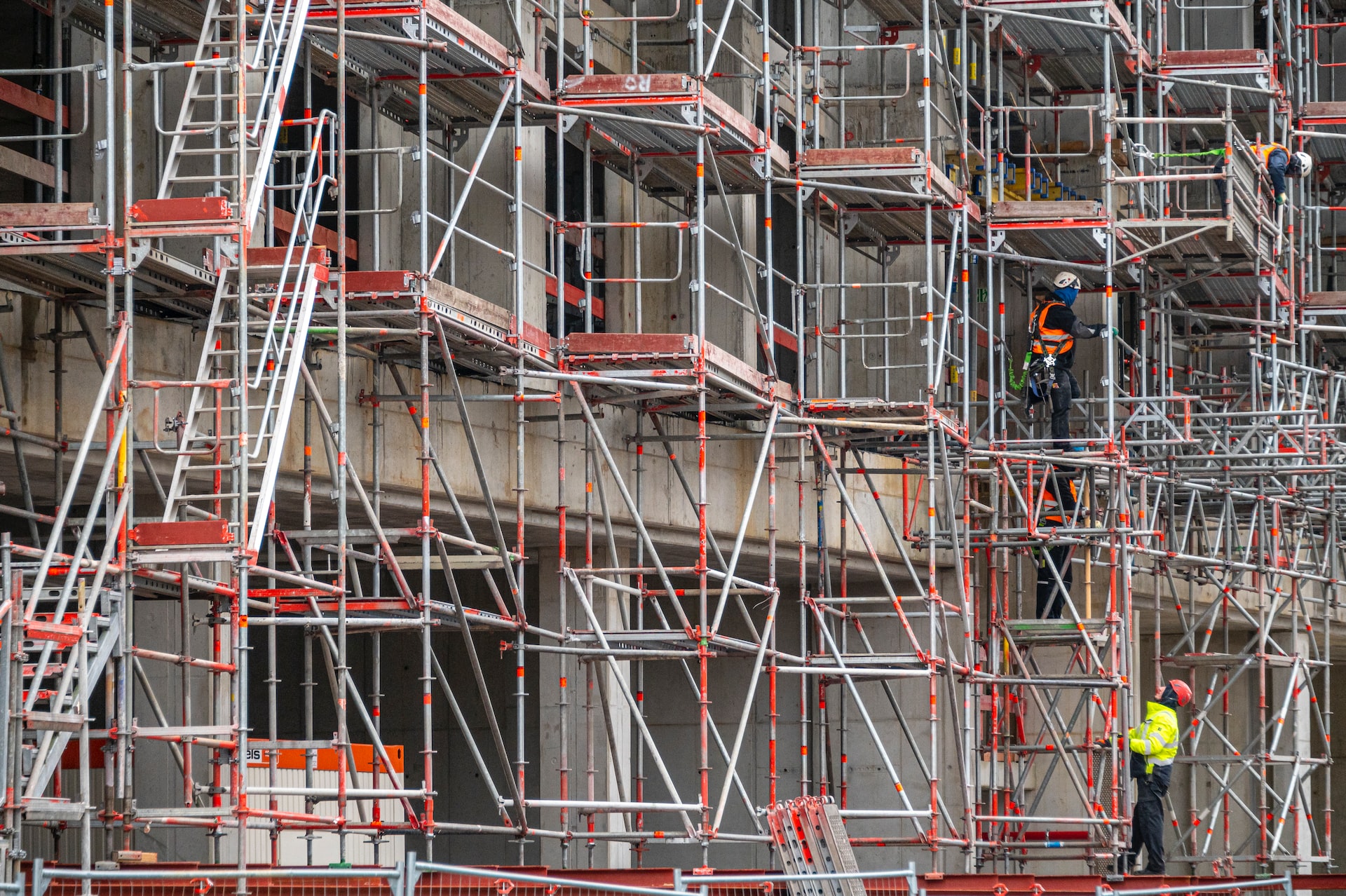Exploring the Different Sorts Of Scaffolding Used in Construction Projects
The building market counts greatly on numerous kinds of scaffolding to meet particular task needs, each offering distinct benefits and applications. Standard structure scaffolding supplies a sturdy structure for basic jobs, while put on hold scaffolding is vital for deal with skyscraper frameworks. Other choices, such as system and rolling scaffolding, provide to efficiency and movement, respectively. Furthermore, the cantilever alternative proves very useful in city atmospheres where room is constricted. Understanding the subtleties of these scaffolding kinds is essential for optimizing safety and security and performance on building sites, motivating a more detailed examination of their special attributes and applications.

Typical Framework Scaffolding
Traditional structure scaffolding is just one of the most widely used approaches in the building and construction industry as a result of its robustness and adaptability. This system is composed of horizontal and vertical structures that are constructed to create a steady system for workers and products. The primary parts include upright blog posts, straight ledgers, and angled dental braces, which together offer a strong framework that can sustain substantial tons.
One of the essential advantages of conventional frame scaffolding is its flexibility to various construction jobs, varying from property structures to large industrial frameworks. The modular design permits very easy assembly and disassembly, making it effective for both temporary and long-lasting jobs. Furthermore, the system can be personalized in elevation and size, fitting different building layouts and site conditions.
Safety and security is paramount in scaffolding applications, and standard framework systems are outfitted with guardrails and toe boards to avoid falls and make certain employee security. Regular inspections and adherence to security regulations are vital in maintaining the honesty of the scaffold (Scaffolding). Overall, typical structure scaffolding stays an essential choice in the building and construction market, giving a trusted system for labor and enhancing total project effectiveness

Suspended Scaffolding
Put on hold scaffolding provides an one-of-a-kind option for construction projects that call for accessibility to raised surfaces, particularly in scenarios where traditional framework scaffolding might be impractical. This sort of scaffolding is typically suspended from the roof covering or top degrees of a structure, using a system of platforms, ropes, and pulleys to produce a functioning space that can be adjusted to different elevations.
Among the key benefits of suspended scaffolding is its versatility. It can be conveniently repositioned or lowered to suit adjustments in building and construction needs, making it ideal for tasks such as home window installment, frontage work, and upkeep on skyscrapers. In addition, the minimal impact of put on hold scaffolding permits much better usage of ground space in metropolitan settings, where area is usually restricted.
Security is a critical factor to consider in using put on hold scaffolding. Appropriate rigging and securing systems should be employed to make sure security and avoid crashes. Operators should likewise be scaffolding minecraft learnt the risk-free use of this equipment. On the whole, suspended scaffolding provides a effective and effective service for accessing hard-to-reach areas in numerous construction circumstances, improving both performance and safety and security on site.
System Scaffolding
System scaffolding, often considered as a contemporary option in the scaffolding sector, contains pre-engineered elements that can be rapidly set up and adapted for different construction tasks. Scaffolding. This type of scaffolding is defined by its modular layout, which enables for adaptability and effectiveness on job sites, suiting architectural demands and different elevations
Normally made from high-strength steel or aluminum, system scaffolding offers boosted longevity and security. The components consist of upright messages, straight ledgers, and angled dental braces, which interconnect securely, making sure a robust framework. The layout commonly incorporates standardized installations, simplifying setting up and disassembly processes, therefore minimizing labor time and costs.

Rolling Scaffolding
Rolling scaffolding is a functional choice to traditional set scaffolding, designed for mobility and ease of usage on construction websites. This kind of scaffolding includes a system supported by frameworks with wheels, allowing workers to easily transfer it as required. The wheelchair function considerably improves efficiency, as it reduces downtime related to dismantling and setting up taken care of scaffolding.
Usually built from lightweight products such as aluminum or steel, rolling scaffolding offers a tough yet portable service for projects calling for regular repositioning - Scaffolding. It is particularly advantageous in jobs such as paint, drywall installation, and electric work, where access to various heights and locations is needed
Safety and security is vital in rolling scaffolding style, with features such as securing wheels to stop unintended activity when in operation, and guardrails to protect employees from falls. In addition, numerous versions are adjustable in height, suiting various task needs.
Cantilever Scaffolding

The design of cantilever scaffolding generally includes using brackets or arms secured to a structure or structure, allowing the platform to extend outside safely. Safety is paramount; hence, these scaffolds have to be crafted to stand up to different lots and ecological problems. Routine assessment and maintenance are necessary to guarantee structural honesty and employee security.
Cantilever scaffolding is favored for its convenience and effective use of space, making it a prominent selection in city atmospheres where space restraints prevail. Furthermore, it facilitates less complicated accessibility to high elevations, inevitably contributing to the total effectiveness of construction tasks. As with all scaffolding kinds, proper training and adherence to safety and security standards are essential for workers making use of cantilever scaffolding.
Final Thought
Conventional framework scaffolding gives security, while suspended scaffolding provides adaptability for raised jobs. System scaffolding promotes fast setting up, and rolling scaffolding boosts mobility for varying work environments.
Conventional framework scaffolding offers a durable foundation for general tasks, while suspended scaffolding is important for work on skyscraper frameworks.Moving scaffolding is a functional option to standard fixed scaffolding, developed for movement and simplicity of use on building and construction sites. As with all scaffolding kinds, proper training and adherence to safety standards are vital for workers utilizing cantilever scaffolding.
Traditional structure scaffolding gives stability, while suspended scaffolding provides flexibility for elevated jobs. System scaffolding promotes quick assembly, and rolling scaffolding boosts flexibility for differing work settings.
Comments on “Scaffolding Guildford: The Best Option for Your Building and Renovation Projects”